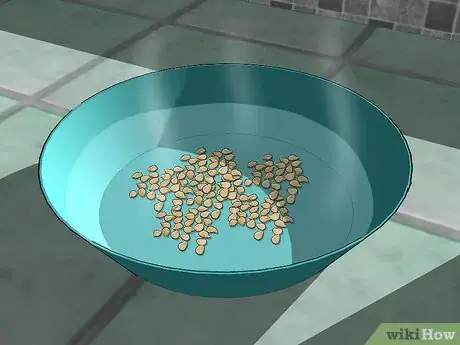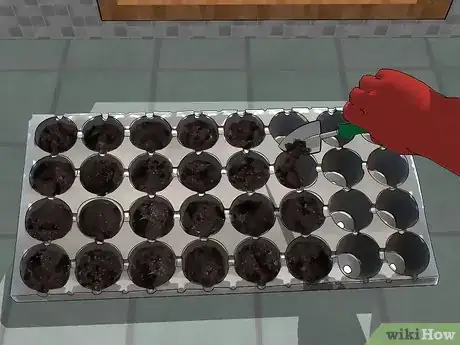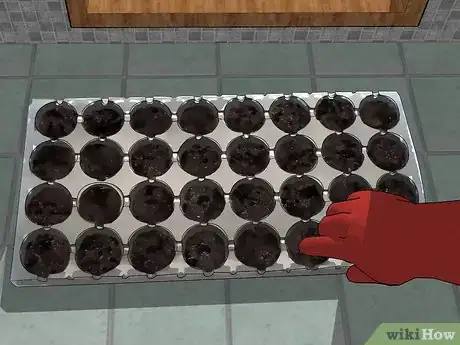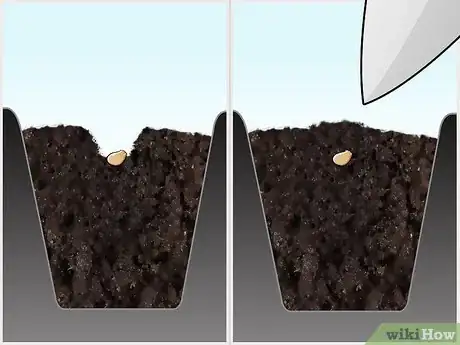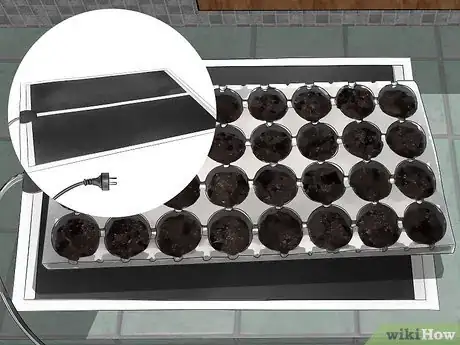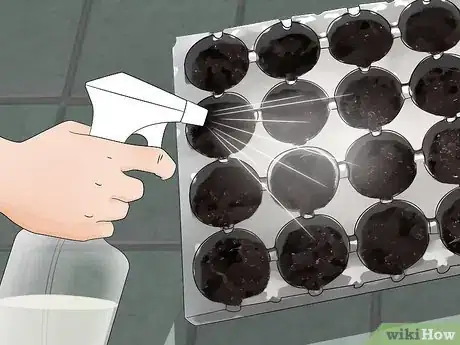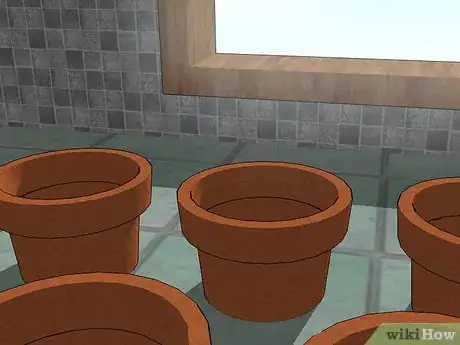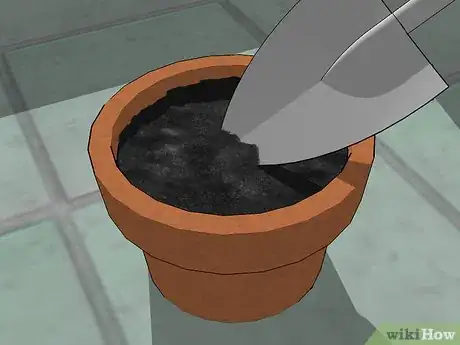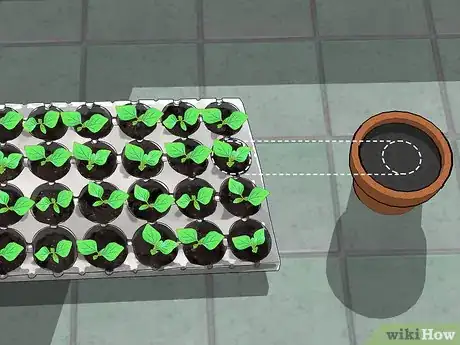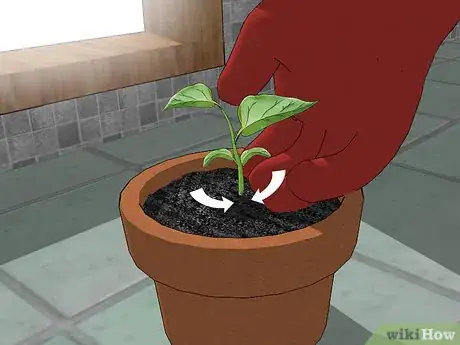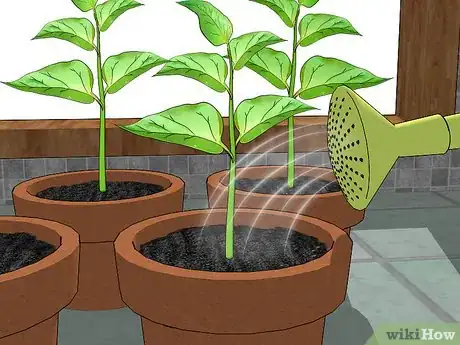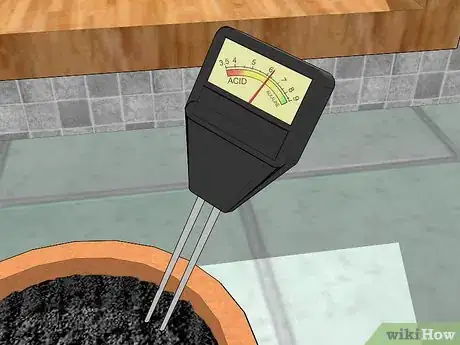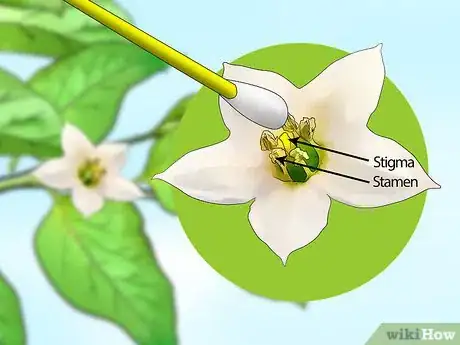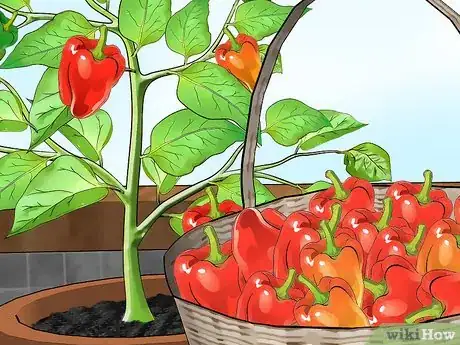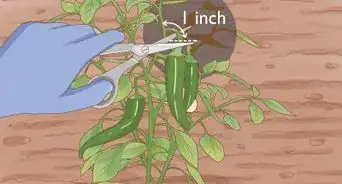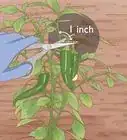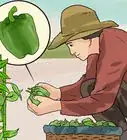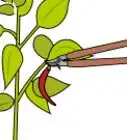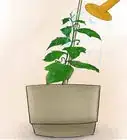This article was co-authored by Jon Rowland. Jon Rowland is a Plant Specialist and the Founder of the Green House Center blog. With over eight years of plant and garden experience, he specializes in greenhouse care, lawn and garden maintenance, and home appliance recommendations. Jon aims to share his knowledge so that others can live a more convenient, efficient, and environmentally friendly lifestyle.
wikiHow marks an article as reader-approved once it receives enough positive feedback. This article received 15 testimonials and 93% of readers who voted found it helpful, earning it our reader-approved status.
This article has been viewed 374,804 times.
Bell peppers need a little work to grow, but the amount of work needed to grow them indoors is not much more than the amount of work needed to grow them outdoors. Keeping the plants moist and warm enough poses the most difficult obstacle, but the right conditions are not too hard to produce as long as you know what the peppers need.
Steps
Planting
-
1Soak the seeds.[1] Pour your seeds into a small plastic cup and fill it with warm water. Allow the seeds to sit for two to eight hours, until they sink to the bottom of the cup. Soaking the seeds breaks down some of the hard coating, speeding up the germination process.
- You can also try soaking the pepper seeds in weak chamomile tea or a solution made with 1 cup (250 ml) warm water and 1 or 2 teaspoons (5 or 10 ml) of 3% hydrogen peroxide. These solutions are even more effective at breaking down the coating and have the added benefit of disinfecting the seeds.
-
2Fill a disposable plastic seedling tray with soil. A sterilized, loose-draining potting mix purchased from a garden supply or home improvement store should be sufficient.Advertisement
-
3Poke a hole in the soil with your finger or the end of a pencil. The hole should be about 1/4 inch (2/3 cm) deep.[2]
-
4Bury the seeds. Drop one seed into each hole and loosely cover it with additional soil.
-
5Place the seed tray in a warm location. Sweet bell peppers germinate best when the soil temperature is at 70 degrees Fahrenheit (21 degrees Celsius) or higher. If possible, sit the seedling tray on top of a seedling heat mat.[3] Otherwise, place it on a warm, sunny windowsill.
-
6Keep the seeds moist. Once the surface of the soil becomes dry, spray it down with water. Do not drench the soil, but do not allow it to dry out.[4]
Transplanting
-
1Transplant the seedlings once they have two sets of true leaves.[5] "True leaves" refer to fully grown leaves, rather than leaves that are just beginning to grow.
-
2Use a large enough pot. If you plan on keeping each pepper plant separate, a 2-inch or 4-inch (5-cm or 10-cm) pot should suffice. You can also combine multiple pepper plants into a single pot if it is larger.
-
3Fill the pots with soil. Use a loose, well-draining soil, preferably one with a high content of organic matter.[6]
-
4Dig a small hole in the dirt. The hole should be the same depth and width of the compartment your seedling currently sits in. If planting one seedling per pot, dig the hole in the center of the pot. If planting multiple seedlings in one pot, dig multiple holes that are at least 2 inches (5 cm) apart.
-
5Transfer the seedling to the new pot. Gently "wiggle" or pry it from the seedling tray by squeezing on the sides of the plastic compartment. Once the seedling has been removed, roots, soil, and all, place it in the hole.
-
6Pack the seedling in place. Pack the soil around the base of the seedling so that it is firm and steady.
Daily Care
-
1Keep the peppers warm and well-lit. After transplanting, ideal temperatures range between 70 and 80 degrees Fahrenheit (21 to 27 degrees Celsius). Bell peppers also need plenty of light to grow. A sunny window may accomplish both requirements, but even the sunniest window may not be enough. Fluorescent grow lights generally work much better. Keep the lights no less than 3 inches (7.6 cm) from the top of the plant for 14 to 16 hours each day.
-
2Water consistently. Thoroughly soak the soil every few days, allowing the top of the soil to become just barely dry in between each watering.
-
3Test the pH. Bell peppers grow best in soils with a pH between 5.5 and 7.5. Add ground agricultural lime to the soil if you need to increase the pH. Add compost or fertilizer to the soil if you need to decrease the pH.
- Low-nitrogen fertilizer is a great option for bell peppers.
-
4Pollinate the peppers when they flower. Using a cotton swab, gently rub pollen from the anthers on a male flower. Swab the pollen into a female flower, applying it onto the large pollen-collecting center stalk, called a "stigma." Pollinating the pepper plant will increase your yield.
-
5Harvest the peppers as they mature. Once they reach a usable size and an appropriate color, the peppers should be ready to harvest. Use sharp, clean shears to make a clean cut, leaving a stem that is about 1 to 2 inches (2.5 to 5 cm) in length.
Community Q&A
-
QuestionSome of my pepper plants bend when they reach a certain height. How can I prevent this?
 Community AnswerTie the plant to a thin wooden pole to the plant with some thick string.
Community AnswerTie the plant to a thin wooden pole to the plant with some thick string. -
QuestionThe leaves on my green pepper plants are starting to turn inward. Someone told me to cut the top off just below the leaves. Is that safe to do?
 Community AnswerYes, you can do it.The turning is because of difference in the pH of the soil, climatic conditions, insects, and other various problems in the plant . But be careful, not to cut all the leaves, the plant may die too.
Community AnswerYes, you can do it.The turning is because of difference in the pH of the soil, climatic conditions, insects, and other various problems in the plant . But be careful, not to cut all the leaves, the plant may die too. -
QuestionHow do I identify a male and female flower?
 Dtown2002Community AnswerA male flower will have little stems with pollen on top. A female will have a stem with nothing. You will need to place pollen onto the tip of the stem.
Dtown2002Community AnswerA male flower will have little stems with pollen on top. A female will have a stem with nothing. You will need to place pollen onto the tip of the stem.
Things You’ll Need
- Plastic cup
- Water
- Chamomile tea
- 3% hydrogen peroxide
- Well-draining soil
- Plastic seedling tray
- Pencil
- Spray bottle
- Watering can
- Seeding heat mat
- Small to medium pots
- Garden trowel
- Fluorescent grow lights
- Soil pH tester
- Cotton swab
- Shears or scissors
References
- ↑ http://davesgarden.com/guides/articles/view/2266/#b
- ↑ https://www.almanac.com/plant/bell-peppers
- ↑ https://www.almanac.com/plant/bell-peppers
- ↑ http://www.theindoorgardens.com/tips-growing-bell-peppers-indoors/
- ↑ https://balconygardenweb.com/growing-bell-peppers-in-pots-how-to-grow-peppers-in-containers/
- ↑ https://balconygardenweb.com/growing-bell-peppers-in-pots-how-to-grow-peppers-in-containers/
About This Article
To grow bell peppers indoors, you’ll need to create warm conditions for the seeds to germinate. First, fill a tray with potting soil and poke small holes in the soil about 1/4 of an inch deep. Place a seed into each hole before covering them with soil. Once all of your seeds are buried, put the tray in a sunny window sill or close to a heater, since bell peppers grow best at temperatures of at least 70 degrees Fahrenheit. Keep the soil moist by watering it whenever it looks dry. After each pepper plant develops a full set of leaves, transfer them to larger pots so they can grow quickly. For tips on how to pollinate the pepper plants when they flower, keep reading!
